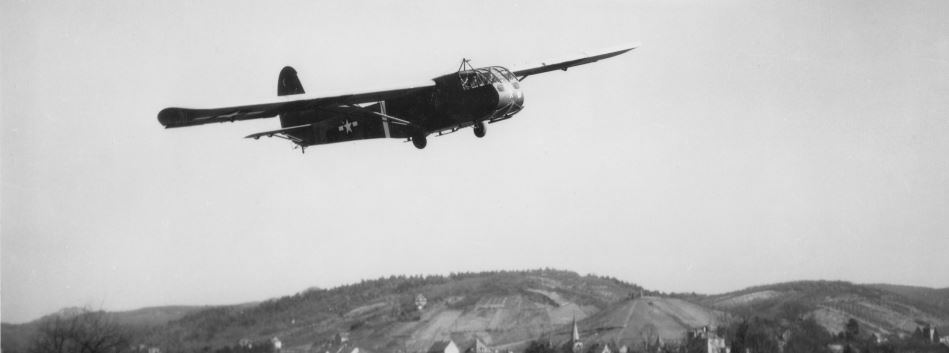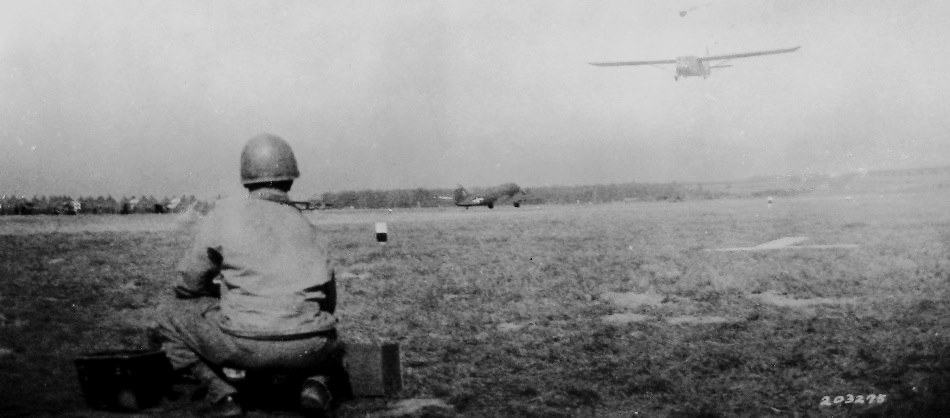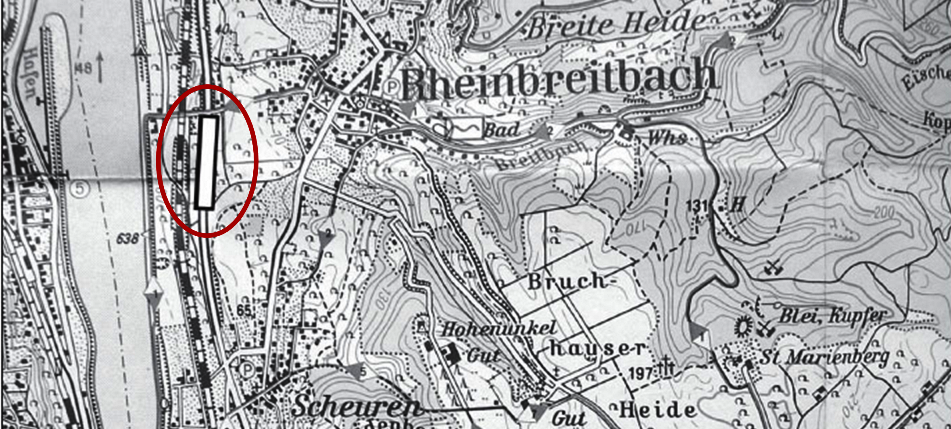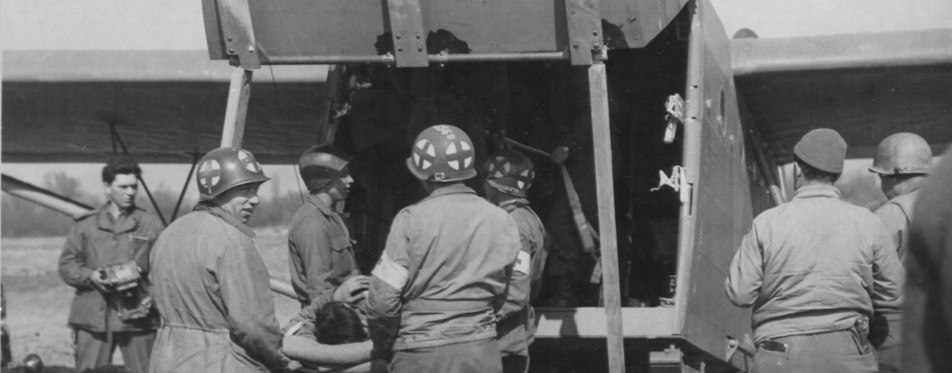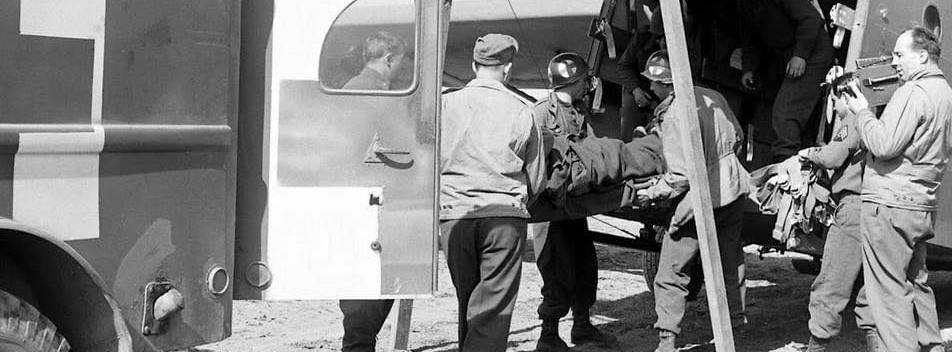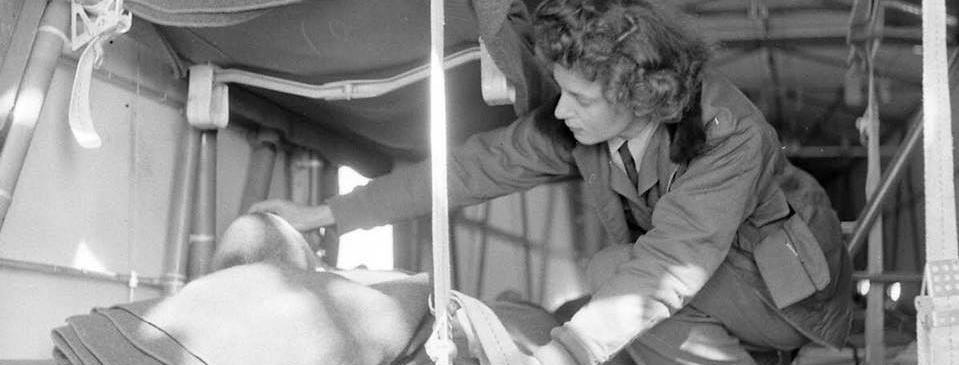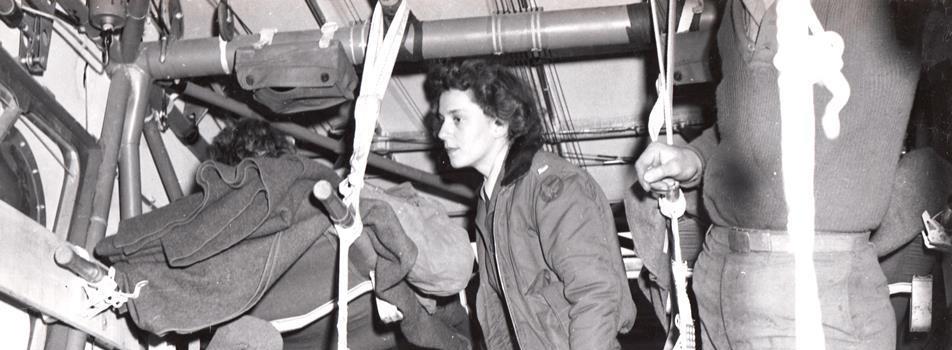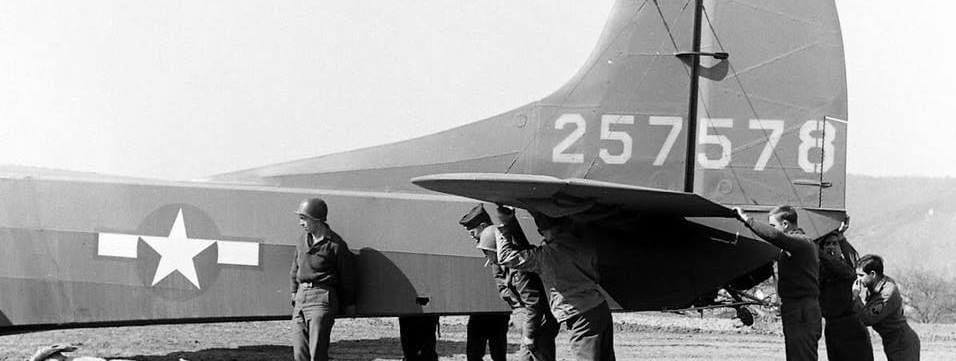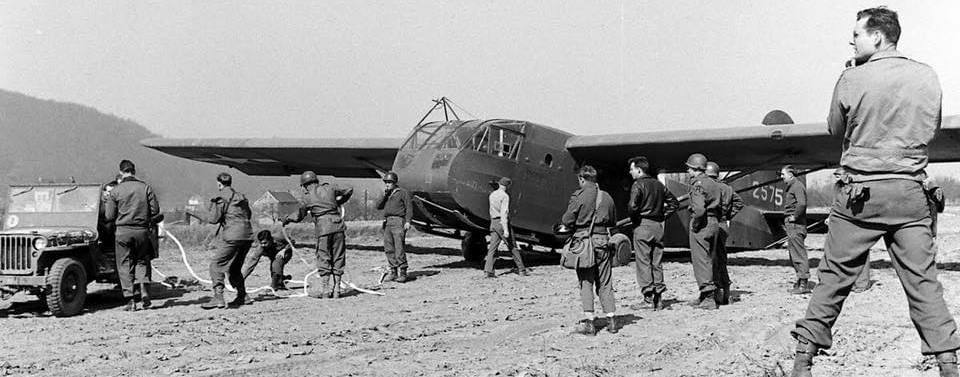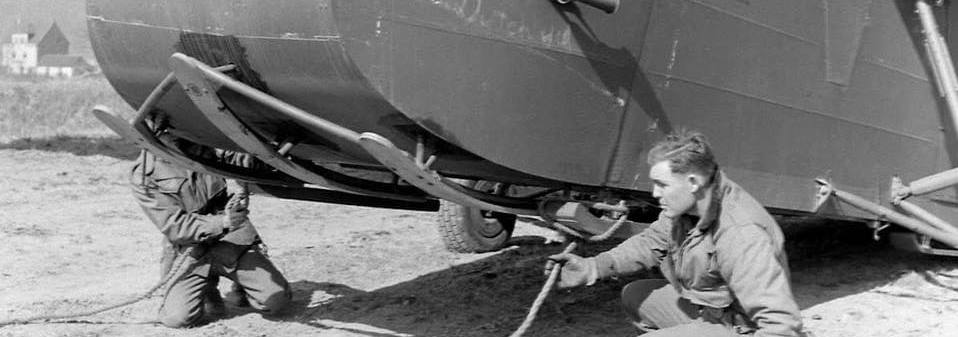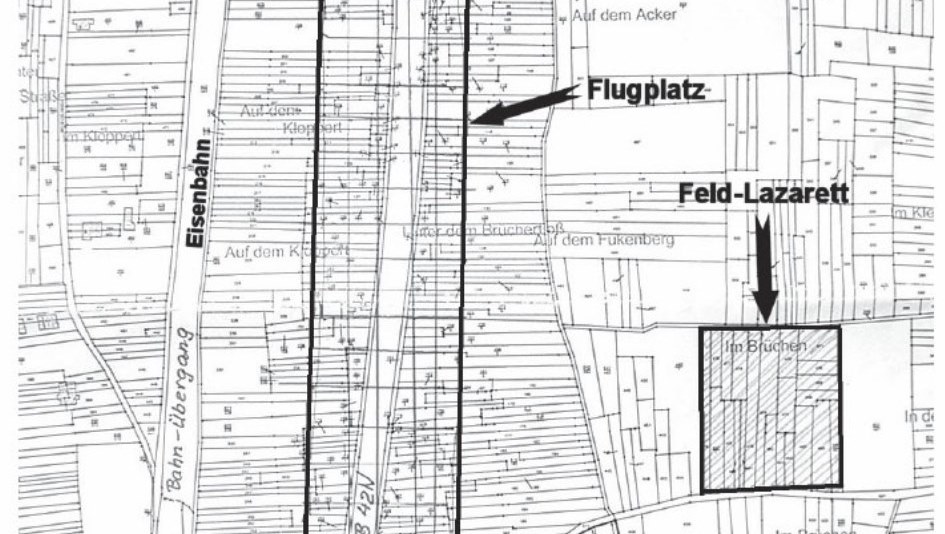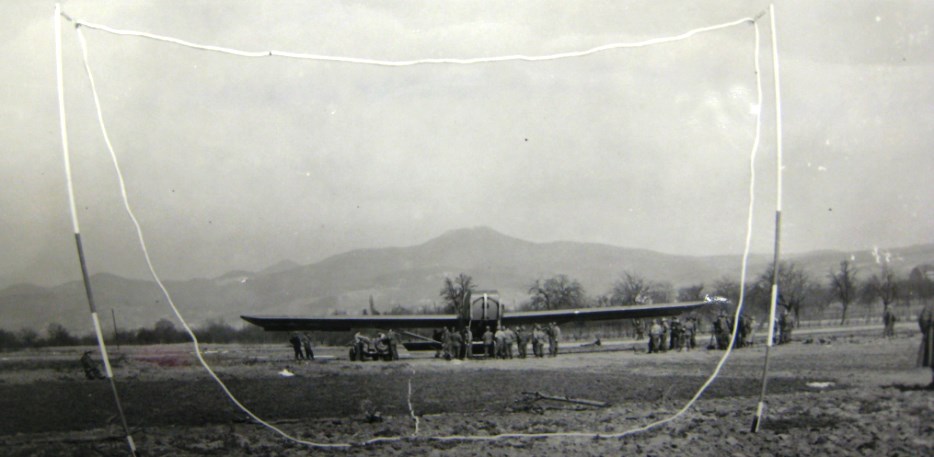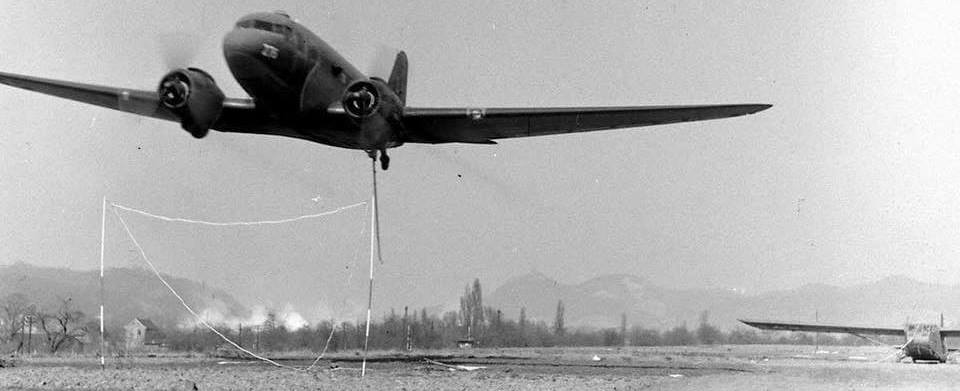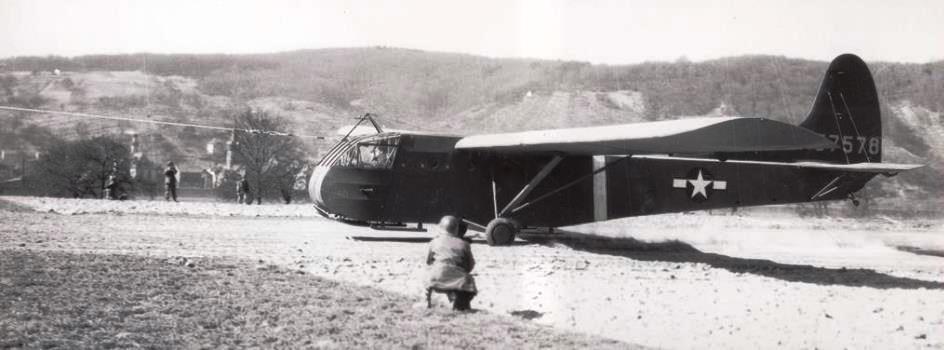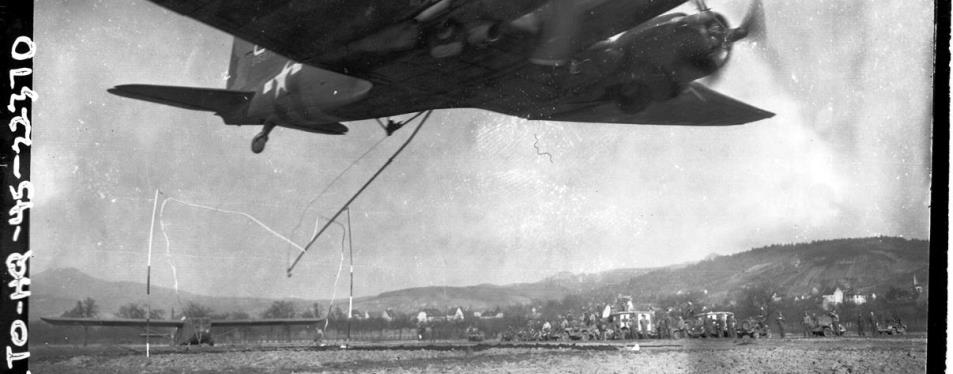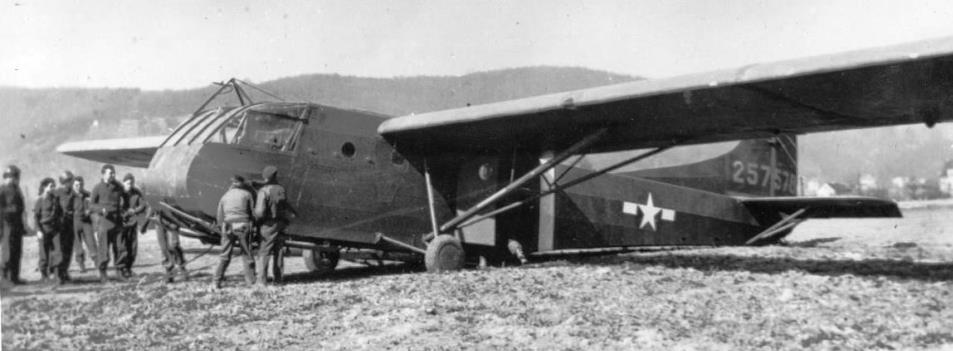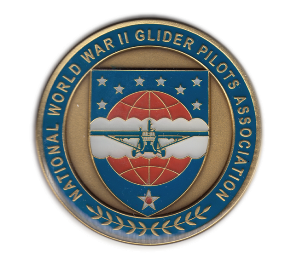National WWII Glider Pilots AssociationLegacy Organization of veterans National WWII Glider Pilots Association. | ||
|
The Rhine has been a natural defensive barrier for Germany that has formed an obstacle for every army. On 24 March 1945 an Airborne Army hopped this defence line in a mission that became the last major Airborne operation of WWII. . There has been controversy over the necessity of this mission. One might say that it was not needed, as the Rhine River had been crossed by American forces prior to this operation. Many historian have left this operation out of the history books or glossed over it because of the idea that this was a needless mission. What cannot be denied is that , the mission was flown on 24 March 1945. Troop carriers dropped paratroopers and landed gliders in the Wesel/Hamminkeln area making this the largest single lift in the history of modern warfare. As it happened to be, a small glider landing had predated this major airborne attack by two days. To learn more about this unique landing we must go further back in time to early March 1945. On 8 March 1945 the 9th Armored Division of the First Army succeeded in capturing a bridge at the German town of Remagen, and became the first unit to cross the Rhine after the disastrous Airborne operation in Holland of September the year before. Two weeks later the bridgehead expanded to a depth of eight miles. Meanwhile, 50th Troop Carrier Wing (TCW) had been working out ideas of a glider pick-up evacuation. The idea of using pick-up aircraft to retrieve “ambulance” gliders was not new to the Wing. In June 1944, Lt. Col. Mathiad F. Regner, the Wing surgeon had conducted tests with simulated patients and declared such recovery of wounded from isolated and encircled areas entirely feasible. He found that a minimum of modification, requiring only a few hours per glider, was needed to equip a CG with litter straps. This installation, which required the litter to be strapped to the side of the glider to control swinging, was later improved upon by Capt. Albert D. Haug, Flight Surgeon in Command of the 816th Med. AE Squadron. Standard web litter supports were retained on the center aisle, while wall brackets were used to secure the outside handles. On 18 March, Capt. Haug, together with Maj. Hugh J. Nevins, the Wing Glider Officer, demonstrated the use of a pick-up glider to snatch casualties to surgeons of the XVIIIth Corps, Airborne, including Lt. Col. Welgie of that Headquarters, and surgeons of the 13th, 17th, 82nd and 101st Airborne Division. Using one glider fitted with 12 litters and another with 6, two lifts were made with 16 simulated patients in each glider. The gliders were prepared by 304th Troop Carrier Squadron (TCS) members Capt. H. A. Price, Lt. W. A. Baker and Lt. G. E. Doyle and crew at airfield A-63. 1st Lt. Gerald Berry, pilot of the 91st Troop Carrier Squadron remembered: One Sunday morning in the middle of March 1945 I was assigned to fly the pick-up plane 43-15213 from Châteaudun to a field near Reims, not knowing what was to happen there. A number of high ranking officers from the Medical corps were there when we arrived. They wanted to observe, and participate in a series of pick-ups of gliders loaded with men to simulate seriously wounded personnel. We made three pick-ups in which the brass first rode in the tow plane and then switched and rode in the glider. In the third they were interested in finding out how much stress was on the wounded. In this excersice they did not strap one man down so they could observe how far he would slide back on the litter during the pick-up. All went well and I was told to return to base and await any further orders.1 The normal load for the CG-4A was 12 patients prone with 4 or more patients, up to 7500 lb gross load, seated on the floor down the center of the glider. Thus in one trip a standard CG-4A could carry in two tons of medical supplies to a temporary field hospital (which also can be moved by glider). This enabled 4 ambulances and drivers to collect fresh casualties at forward aid stations. 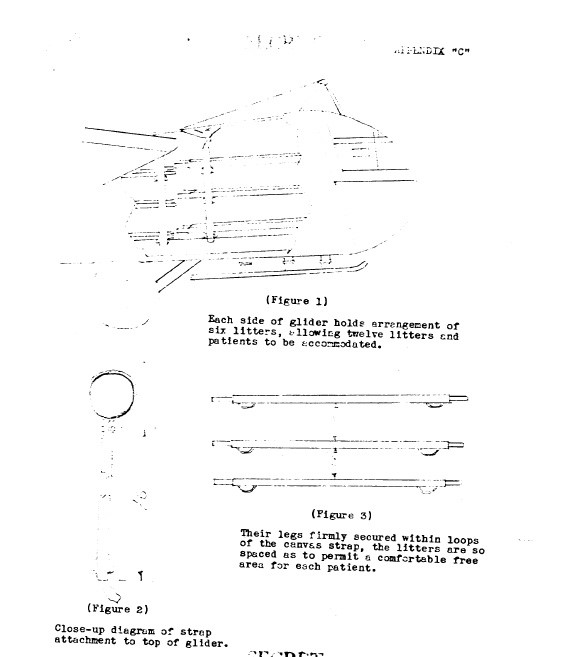 This diagram from the May 1944 records of the 442nd Troop Carrier Group show that studies on glider evacuations were done long before it was actually used in Europe. (AFHRA) The main reason for air evacuation was not the need for speed to save the patients, but rather to clear field hospitals to provide space for current casualties. The advantage of gliders was immediately apparent when it was realized that they can land and be snatched from any clear space, 800-1000 feet in length, with no obstacles higher then 50 feet at either end. One pick-up aircraft could handle two or more gliders by towing a load of supplies forward, dropping it to be emptied and re-load with patients, while he snatches a second CG from the previous trip and takes it to the rear hospital. Operation ’PICKUP’ was planned to take out wounded soldiers out of the Remagen bridgehead. The mission, co-ordinated bythe higher Headquarter with the First Army, was assigned to the 442nd Troop Carrier Group. Two C-47 tug planes and two CG-4A glider were used in this mission, flying as Serial 1 and Serial 2. Realizing the unique character of the operation, public relation wheels were put in motion and photographers of Time and Life magazines and military photographers were taken along on the mission. The field order setting up the mission was received by TWX at 0900 hours, 20 March. At that time, operations and intelligence staff were pretty busy in making preparations for operation Varsity. The order determined that medical supplies were to be transported to and wounded evacuated from an LZ on the east side of the Rhine River by the two CG-4A gliders. The LZ was a cleared field near the river about ½ mile north of Unkel, near the 51st Field Hospital. H-hour was set at 1200 hrs., 22 March 1945. The route specified was from B-24 to Y-60 (near Dunstehoven, Germany) to IP to LZ with a reciprocal return course. After receiving the order, arrangements were made to load two gliders with 2,000 pounds of blankets and litters that were to be delivered to the LZ. As the 442nd Troop Carrier Group (TCG) had no C-47s equipped for glider pick-up, C-47 aircrafts were furnished by the 439th and 441st Troop Carrier Groups.
Briefing for the power and glider crews was held in the navigation office at 442nd TCG operations at 1500 hours, 21 March that included a route and situation map. . The briefing lasted ¾ of an hour and covered operational procedure, weather, route in and out and the enemy situation, condition of the landing strip and glider approach procedure. Attention was called to barrage balloon obstructions around the Remagen Bridge. The crews were instructed to bring back specific information about conditions of the landing strip, facilities at Y-60, location of pontoon bridges and any enemy activity observed. Briefing officers were Lt.-Col. Alan D. Moore (442nd TCG Operations Officer), Maj. Ennis McCall (Group Glider Officer), Capt. Thomas W. Wolfe (Group Intelligence Officer), 1st Lt. Leland C. Kimball (Group navigator) and Maj. High J. Nevins. THE MISSIONTake-off was made from Station B-24 according to schedule at 0924 hours, 22 March. Serial #1 flew the course as briefed and the glider landed at the LZ at 1200 hourshe tail section was slightly damaged upon landing, but the glider was not rendered unfit for pick-up Within 46 minutes after landing, the glider was unloaded, took 12 wounded patients aboard, and was rigged to the hook-up stand ready to be snatched. A team of glider pilots from the 442nd TCG handled the pick-up stand. Meanwhile, the tug plane circled the river area. At 1247 hours, on the first attempt, the glider was towed off and the flight back to the 44th Evacuation Hospital at Y-60 began. The glider was cut loose there at 1300 hours and landed on the grass in front of the hospital tent area one and one half minutes later. This completing the first glider evacuation of wounded soldiers from the bridgehead battle zone. 1st Lt. Berry recalled: After dropping the glider we circled the area until the yellow strip banner was placed vertically to the plane of the pick-up station, indicating all were ready to be snatched, and then preceded with the pick-up. As for the pick-up the approach to the station was made at normal landing approach speed of 120 MPH but with landing gear retracted. When over the pick-up station the throttles and prop pitch were firewalled for maximum power. When the hook made contact with the looped rope, the steel cable to which the hook was attached, played out of the pick-up mechanism and was gradually stopped as the braking took effect. The pick-up mechanism consisted of a steel drum around which the cable was wrapped and inside the drum was a multiple disc brake just like the brakes on the planes wheels. As a result, there was no real jerk as the rope was snatched but merely a slowing of airspeed from 120 down to about 90. Due to the stretch in the Nylon tow rope there was a surge after the initial stretch as the rope recovered to the original length. The glider of Serial #2 landed at Y-60 at 1145 hours as briefed before proceeding to the LZ. Planes had been made to pick up Major General Paul L. Williams, Commanding General of IX Troop Carrier Command, at Y-60, but these were changed due to unforeseen circumstances. At 1238 hours the second glider cut loose over the LZ, at the briefed altitude of 1200 feet and landed without incident. Because of delay in bringing patients to the landing strip where the glider was waiting to be loaded, the glider was not towed off until 1515 hours. During the three and a half hours the crew of the C-47 kept circling the area and crossed the Rhine River numerous times They made mental notes on the three visible bridges across the river and the Remagen balloon barrage. Eventually, the go ahead to snatch the glider was given and the C-47 snatched the glider successfully on the first attempt and landed at Y-60 with 14 patients aboard at 1530 hours. Besides the pilot and co-pilot , the glider carried 14 patients (two were walking wounded), one flight nurse, two photographers, and one technician.One of the wounded was very badly in need of surgery and was loaded into the glider at the last minute with the possibility of saving his life when arriving at the Evacuation Hospital. Interrogation of the glider crews was conducted by the Group Intelligence section at Station B-24 on the evening of 22 March, but power crews did not remain at the station and therefore were not interrogated. No enemy was observed by either serial. Four pontoon bridges were observed. The landing strip, although only 150 yards long by 30 feet wide, was found adequate for landing and pick-up. RESULTSThe assigned mission was successfully accomplished with only a few minor hitches and it was demonstrated that glider evacuation of wounded was a feasible measure. It was shown that a wounded soldier could receive rear area hospital attention within less than an hour after the time he became a front line battle casualty. In addition, an opportunity was provided for both Troop Carrier and the First Army to receive a considerable amount of laudatory publicity. In total 24 litter cases and two walking wounded were evacuated from the LZ. 4,000 pounds litters and blankets were delivered to the LZ. CONCLUSIONGround medical personnel at pick-up strips should be trained in the use and adjustments of litter fastenings used in gliders. Time was lost because of inexperience in this respect. A pick-up glider should be already loaded and waiting at the time the tug arrives, both to avoid the necessity of the tug hovering in an area of possible enemy activity, and to expedite matters. Attention should be paid to clearing obstacles from the end of pick-up strips. The tow rope of Serial #2 glider dragged some scrub trees at the end of the LZ, although these were no more than ten feet high. With this demonstration of the use of medical gliders, 22 CG-4A's of the 442nd TCG were equipped with web litter kits, twelve of them going on ‘Varsity”, with the remaining 10 held in reserve for use with the 1st Army. Changes in the tactical situation made the immediate use of gliders unnecessary in either case.
1Note: Under the summary of the final phase of the war by the IXth Troop Carrier Command under Conference on Tactics the following was mentioned: To prove the feasibility of evacuating wounded personnel by glider pickup, a demonstration was staged on 18 March at Villeneuve/Vertus (A-63) for the XVIII Corps (Abn) Surgeon and member of his staff. Two pickups were accomplished with each glider carrying 12 stretcher cases, four walking patients, a medical technician, pilot, and co-pilot. 2
Mr. Gerald Berry provided the tail number of the aircraft as being 43-15213. Official reports of the 50th TCW mention another A/C number, 43-15107. Beside that, he also mentioned that he flew the ship, and that Brig.-Gen. Chappell did not fly along in his ship. Sources:
|
Double Snatch
by Charles Day
First Glider Snatched from Normandy
by Gerald Berry
Glider Retrieval by Jungle Moonlight:
Burma, 1944
byLeon SpencerandCharles Day
Keith H. Thoms
NWWIIGPA Deputy Wing Commander
Eastern United States
Military Snatch Pickup Summary
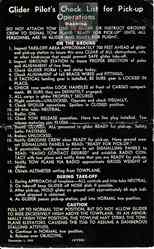 Glider Pilot Check List
Glider Pilot Check List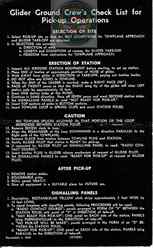 Glider Ground Crew Check List
Glider Ground Crew Check List
Captured by the British
[Tow Know How]
Single Tow
Double Tow
Marshalling
Tow Rope Angle Indicator
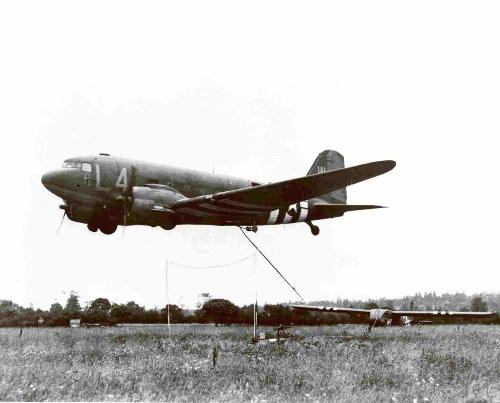
Taken by Yves Tariel of Paris, France, this is a picture of the pick-up of the first glider to be recovered from the Normandy landings. It was taken on June 23, 1944 as the glider was being snatched from a field just SE of St. Mere Eglise France. by lst Lt. Gerald "Bud" Berry, 91st TCSq, 439th TCGp,
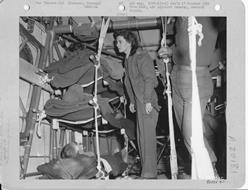
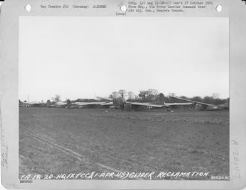
Back caption: GLIDER RECLAMATION -- Two weeks time was all that the engineers of the 82nd Sevice Group, 9th Troop Carrier Command, required to place 60 percent of the 300 gliders in flyable condition after the Rees-Wesel airborne invasion. Shown here is a small group that has been reclamed somewhere in Germany. 1 Spring 1945.
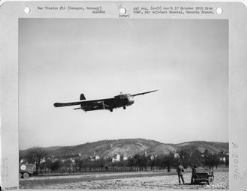
Back caption: A CG-4A glider of the 9th Troop Carrier Command comes in for a landing at Remagen, Germany, to pick up wounded personnel. 21 May 1945.
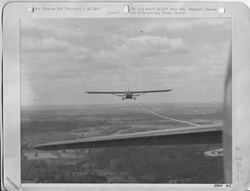
A CG-4A glider and C-47 tow plane will deliver its wounded in a matter of minutes rather than the usual days by truck.

